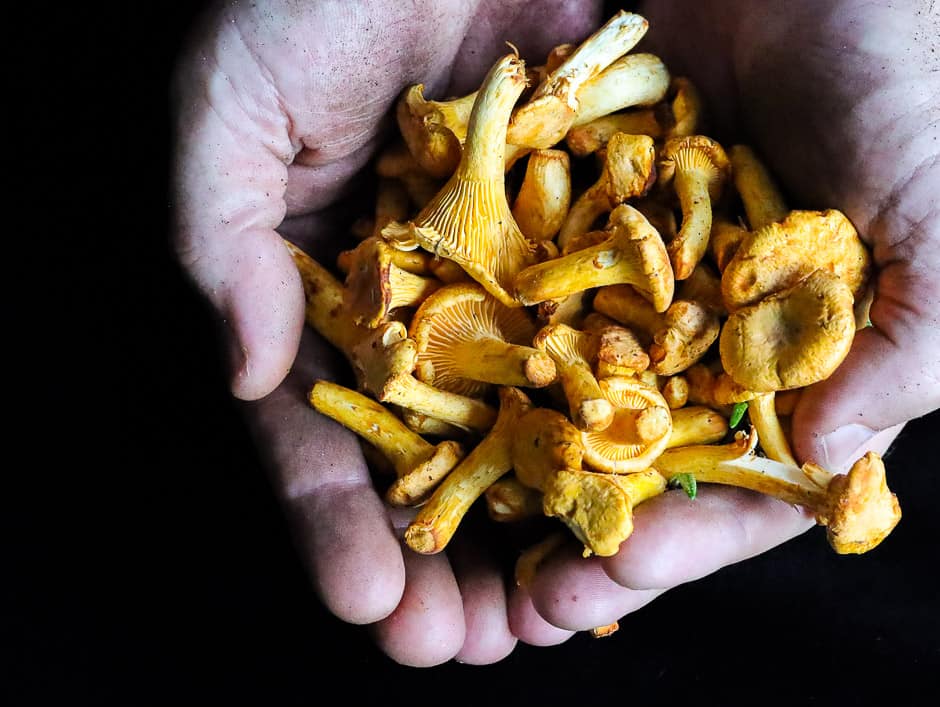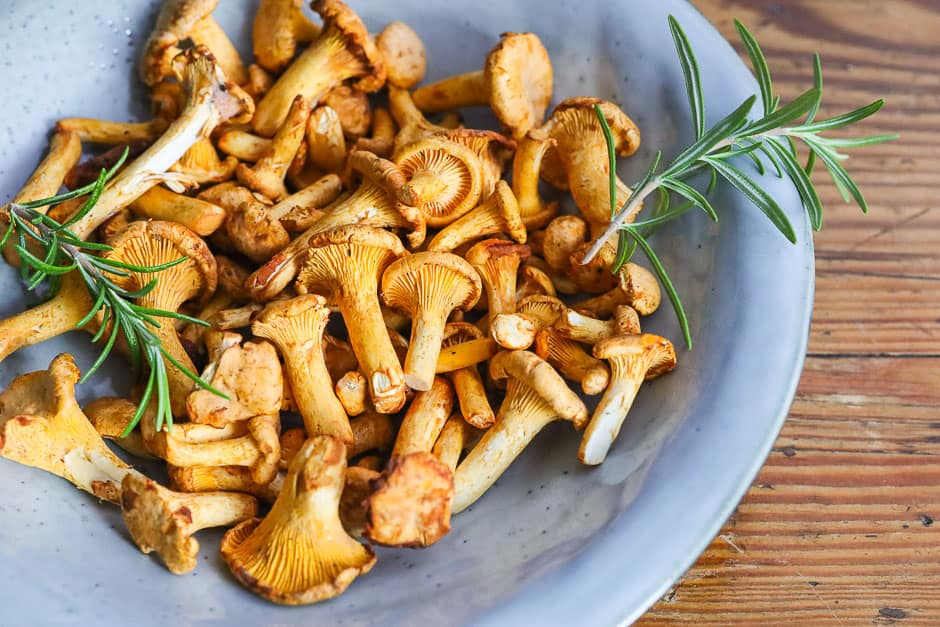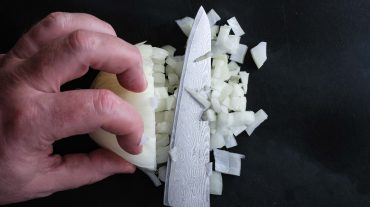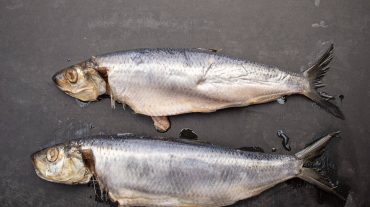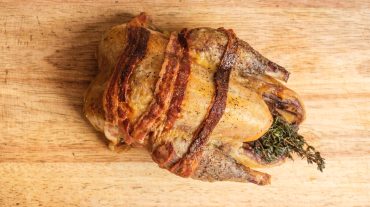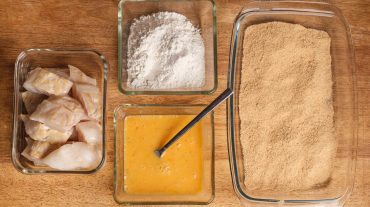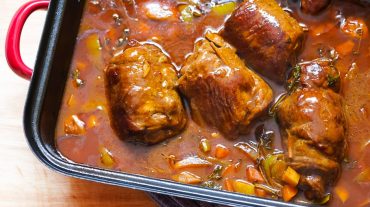Wash and clean Chanterelles, so you bring Mushrooms without dirt into the Pan!
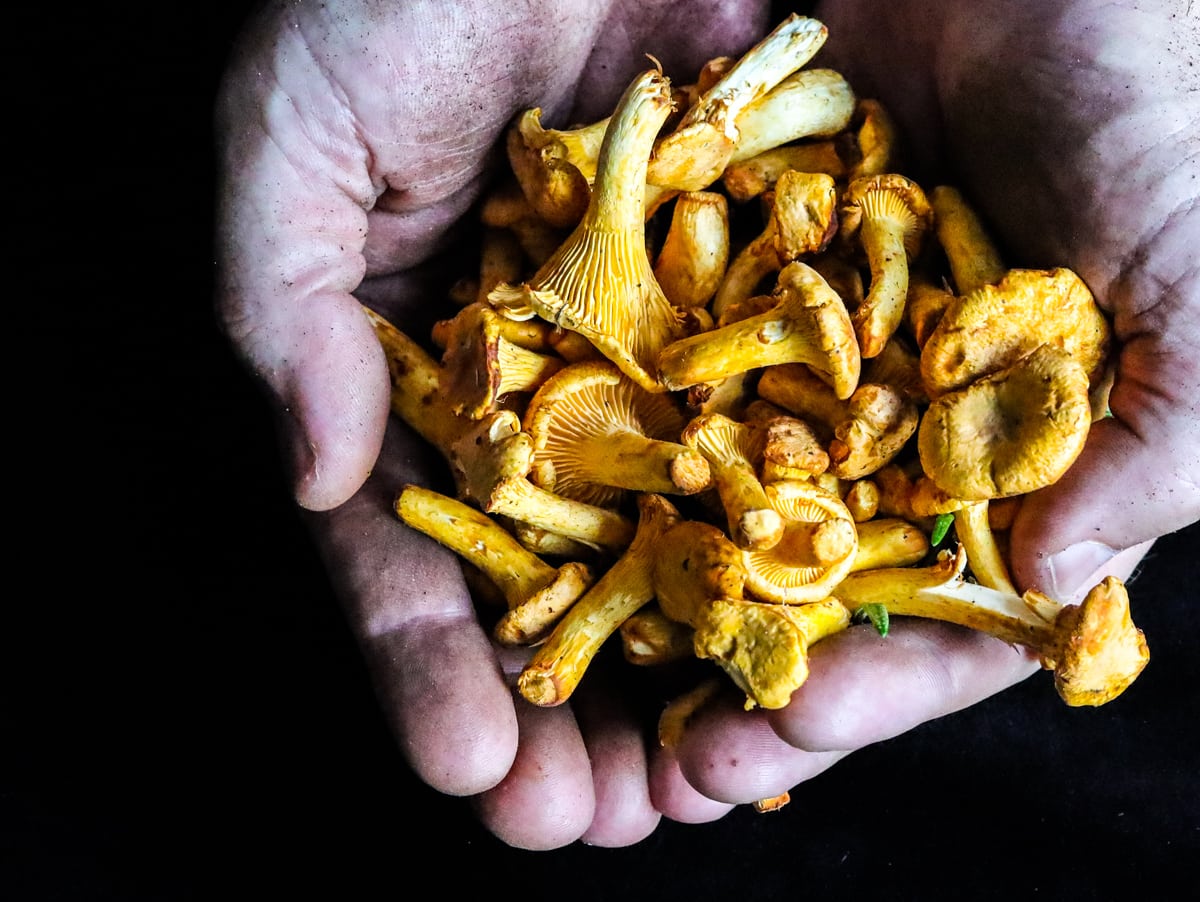
Author:
Thomas Sixt is a chef, food photographer, cookbook author and blogger.
Here he shares recipes, answers cooking questions and helps with cooking.
Wash and clean Chanterelles: Mushrooms from nature usually come with luggage into the kitchen. Sand, needles, moss and insects are unwelcome companions.
The type of fungus plays a subordinate role here. Tube mushrooms such as bay bolete and porcini mushrooms, lamellar mushrooms such as chanterelles and meadow mushrooms… all mushrooms naturally have a cuddly surface.
I have found that forest dwellers of all kinds are magically attracted to mushrooms. I think they actually meet under the umbrella!
Cooks don’t like to wash mushrooms so much, the cooking guild is a few as an exception: During washing, the hat journeymen lose their aroma.
It would be a full evening discussion to find out how much taste is lost in the wash. Or is it perhaps even the forest companions that make up the typical taste of mushroom dishes in the end?
A simple statement… If the mushrooms are very dirty, please wash them. If the dirt can be removed easily with a brush, then please do without washing.
Following the instructions in detail, have fun reading and bathing mushrooms!
1. Clean Mushrooms with a Brush
No water is used in this method. Use a high quality natural hair brush to stroke the mushrooms.
I recommend a watercolour brush Askia 100 for cleaning the mushrooms. The brush is suitable for liquid painting techniques such as watercolour painting and for gouache and oil in normal use. The manufacturer promises a trimming from Kolinsky red sable hair.
The brush has the ideal “hardness” for mushroom cleaning because the fill (=brush hair) has a medium dimensional stability.
Red sable hair for mushroom cleaning, that fits well together! Forget the baking brush for cleaning the mushrooms. Silicone is not possible anyway! A small watercolour brush does not frighten the mushrooms and the dirt can be easily removed.
Now it goes to work: Carefully brush off the fruit body and the mushroom hat and remove the dirt.
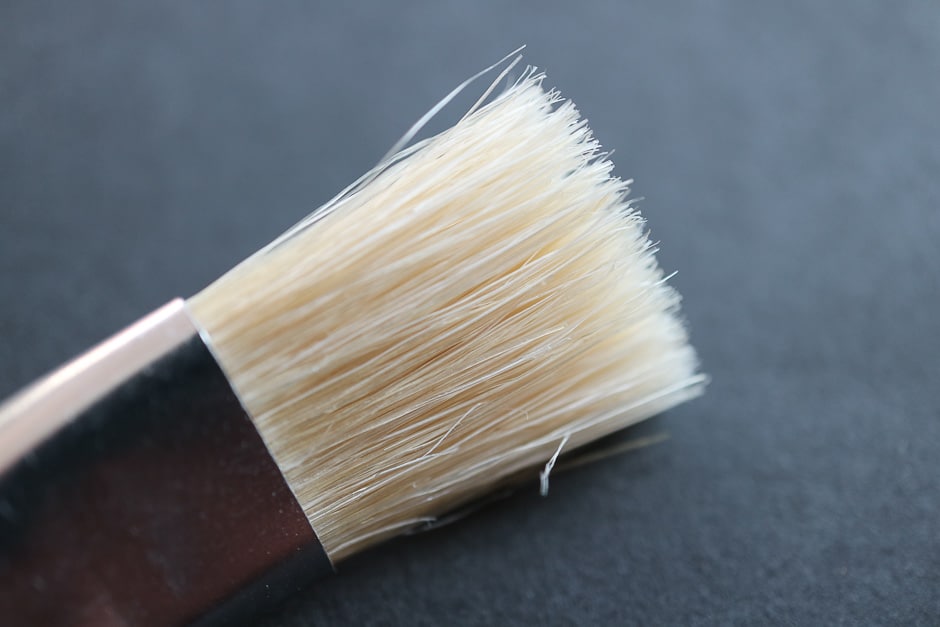
A small brush is perfect for cleaning mushrooms. If you don’t get the mentioned premium model, use a bristle brush and work with a lot of feeling when stroking!
Please pay special attention to the mushroom hat: The underside with the tubes or lamellas are a popular meeting place and a secret cuddle corner for moss and needle pairs.
If stroking the mushrooms is not enough, go to variant two….
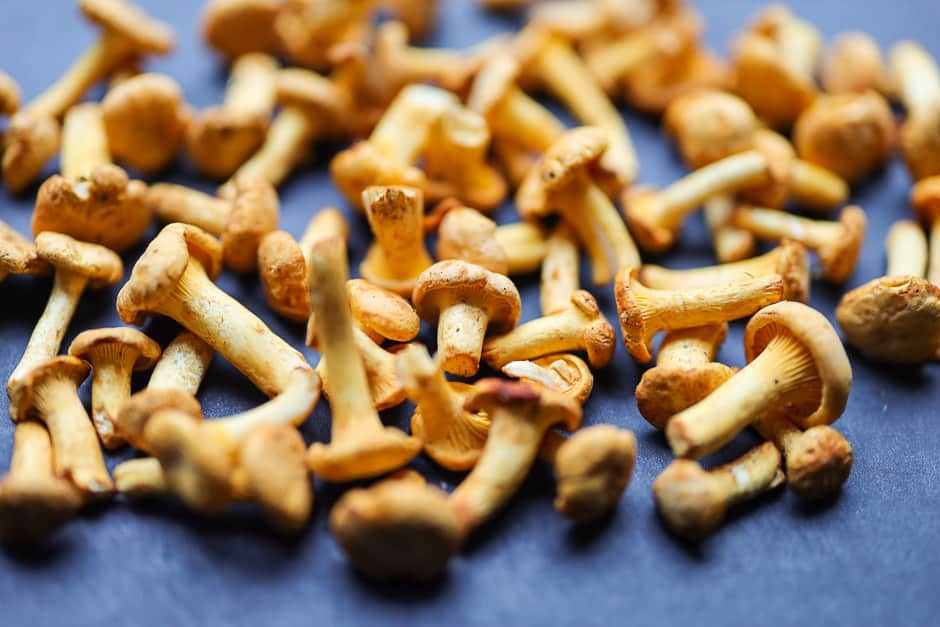
2. Wash Chanterelles with cold Water, Flour and Lemon Juice
What is Thomas pulling out of the cooking drawer today, please? Look out, I didn’t invent it, I learned it from my chef Helmut.
Helmut remains incognito here, but he should laugh when he reads this. Helmut has a meadow in his surname and thus a real close relationship to the mushrooms.
Why? Because on the Wiesn also the mushrooms grow. Sure! or? I learned to wash mushrooms from the chef Helmut. Now comes the explanation from the kitchen miracle department…
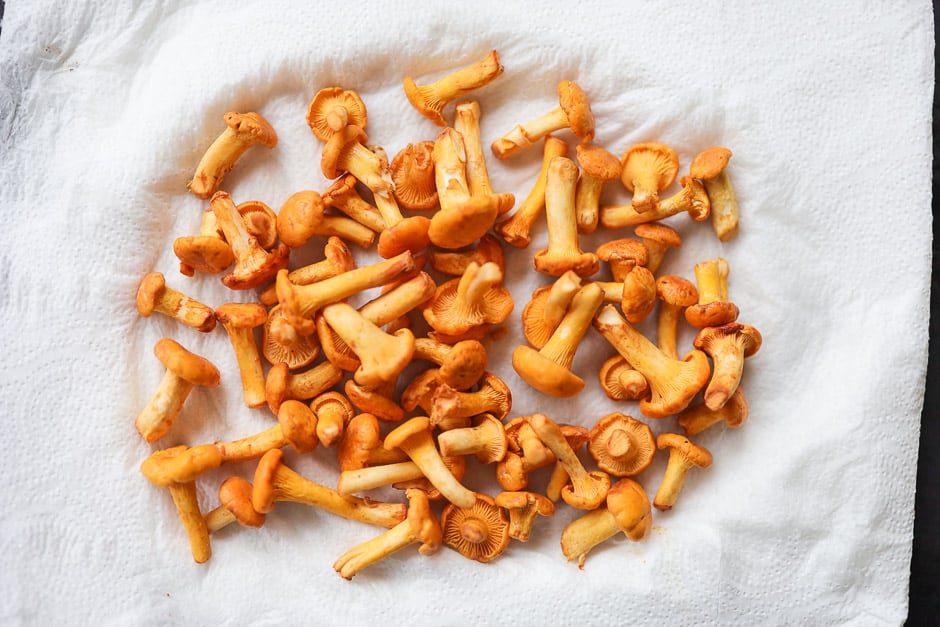
2.1 Why you need Lemon Juice
Water naturally has a surface tension. Therefore water runners can run on the water. This natural tension prevents the absorption and loosening of dirt.
Water alone does not wash! The steam jet does not come well, alternatively let the water from the pipe run “hard” on the mushrooms.
We can watch it wash the salad: If the lettuce is only in the water, the dirt remains on the lettuce leaf. Only by moving the lettuce leaves in the water can the dirt be removed.
And that’s just the way it is: If physical energy is added, then movement comes into play. Lemon juice water dissolves the dirt on the mushrooms better! The lemon juice changes the surface tension of the water, so please add it.
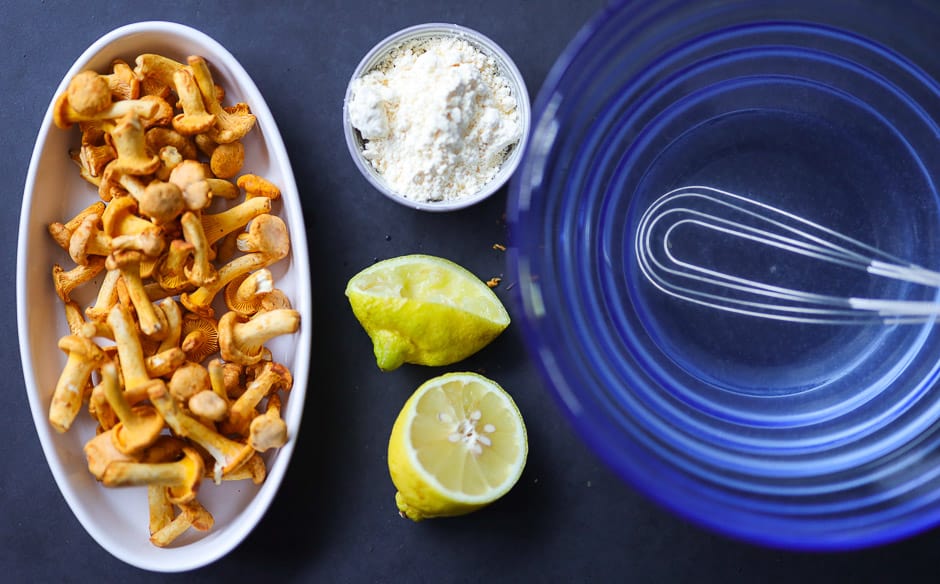
2.2 Why you need Flour
The cleaning effect of the water is created by the acid, which changes the surface tension of the water. Well done!
The flour in the water binds the dirt, the mushrooms get a fine peeling.
The flour keeps the dissolved dirt in the water. By additionally moving the mushrooms, the dirt can loosen optimally.
3. Wash Chanterelles properly, the Step-by-Step Photo Guide
Washing mushrooms made easy: For this you need a kitchen cloth, a sieve, the kitchen sink or a bowl, a whisk, flour, lemon juice and water.
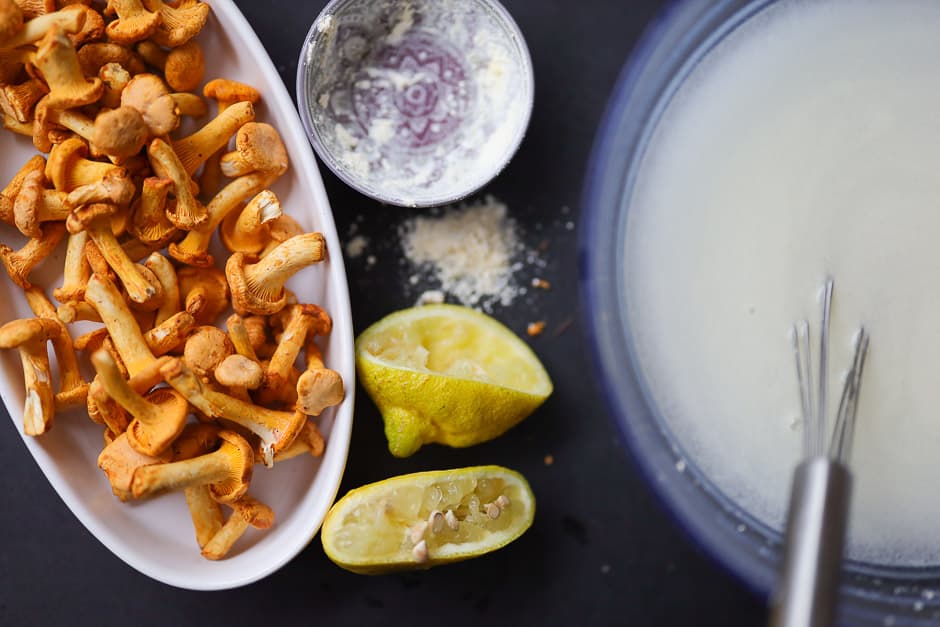
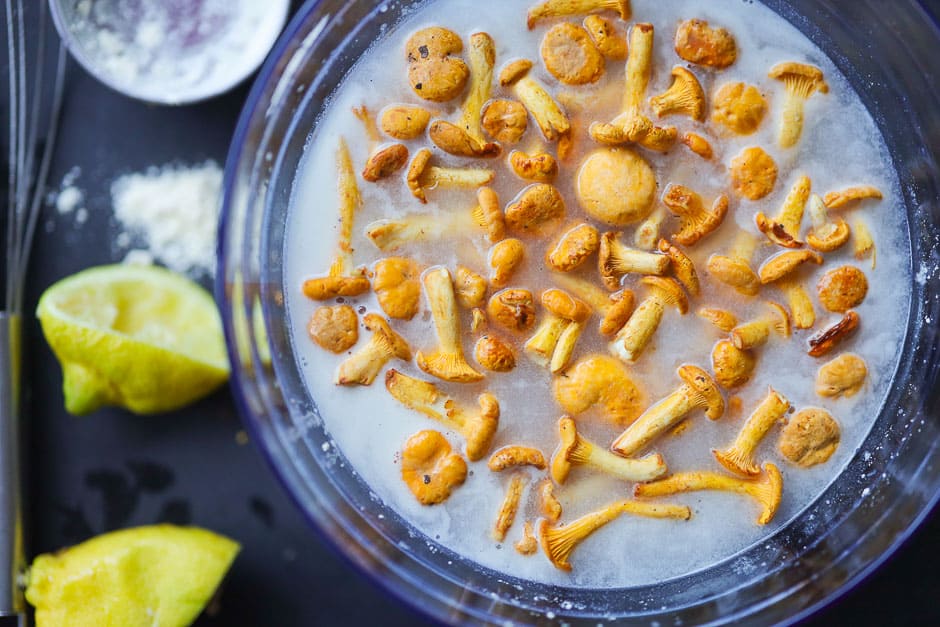

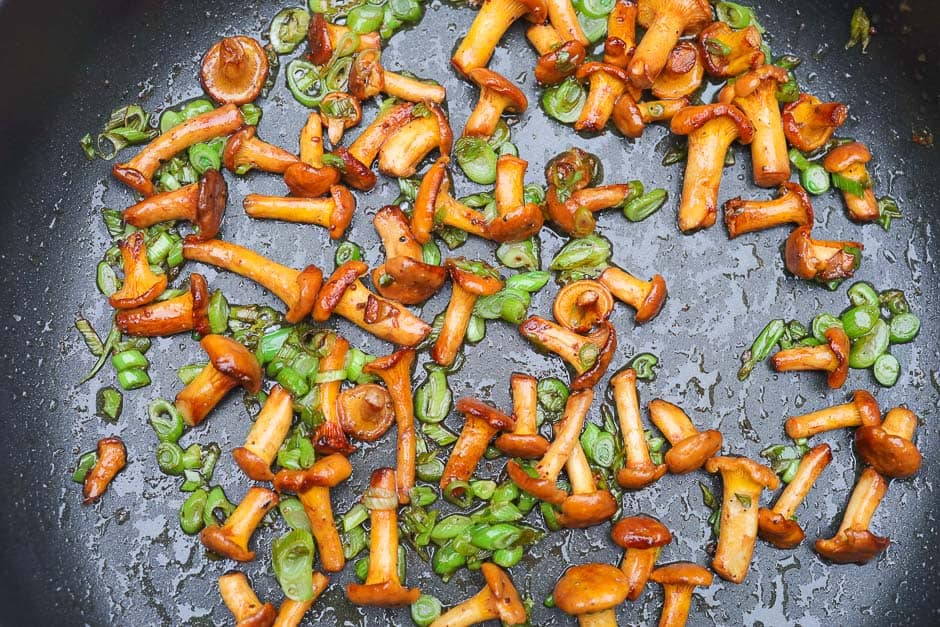
4. Recipe for Chanterelles and other Mushrooms
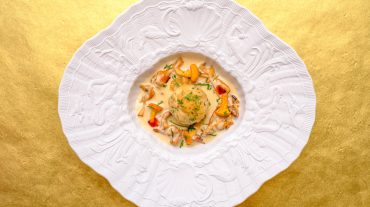
Creamy Mushrooms Sauce
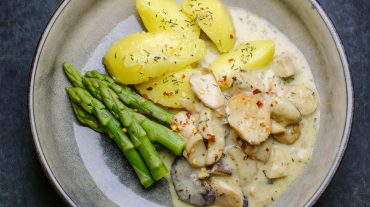
Mushroom Ragout Recipe for Quick Cooking
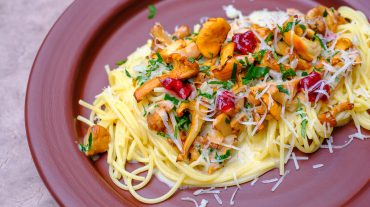
Mushroom Cream Sauce Recipe with Cooking Video
On my page you will find some selected chanterelles recipes. I wish you good luck and a good appetite.
5. Season for Chanterelles
The chanterelles season is from July to October, please prefer the local produce to do the planet a favour!
Visit my seasonal calendar for vegetables, fruit, fish and meat. There you will find a practical list, divided by months.
